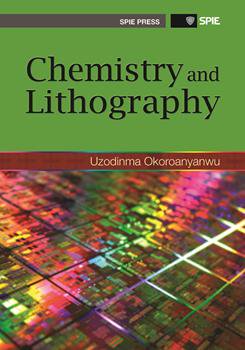|
Within a semiconductor fabrication facility, popularly called a "fab," the lithography module occupies a very central position, literally in terms of the device fabrication process flow, as well as in terms of the importance of the role it plays. Lithography is often considered the most critical step in IC fabrication, for it defines the critical dimension-the most difficult dimension to control during fabrication (e.g., polysilicon gate length)-of the device. This is why the critical dimension in lithography is often used to define the device technology node or generation. It is estimated that lithography accounts for nearly one-third of the total wafer fabrication cost. The object of semiconductor lithography is to transfer patterns of ICs drawn on the mask or reticle to the semiconductor wafer substrate. The transfer is carried out by projecting the image of the reticle with the aid of appropriate optical elements of an exposure tool onto a radiation-sensitive resist material coated on the semiconductor wafer, typically made of silicon, and stepping the imaging field across the entire wafer to complete a layer. The shape of the IC pattern transferred to the wafer substrate is dependent entirely on the wafer layer being patterned. Examples of patterns include gates, isolation trenches, contacts, metal interconnects, and vias to interconnect metal layers. An advanced CMOS (complementary metal-oxide semiconductor) IC can have more than 30 masking layers needed to pattern the multiple layers on a chip. Fabrication of an entire layer often entails processing the wafer through lithography before it undergoes subsequent operations in other modules such as etch, implant, etc. The steps in the semiconductor lithographic process are outlined in Fig. 11.1 and illustrated in Fig. 11.2 for a negative and a positive resist. The chemical and physical principles underlying each step are discussed at length in the following sections. Lithographic modeling comprehending most of these steps is provided in Chapter 12 in a unified manner, with a view to providing a framework for predicting lithographic outcomes, given a defined set of input resist materials and process variables, as well as exposure conditions. |
|
|


